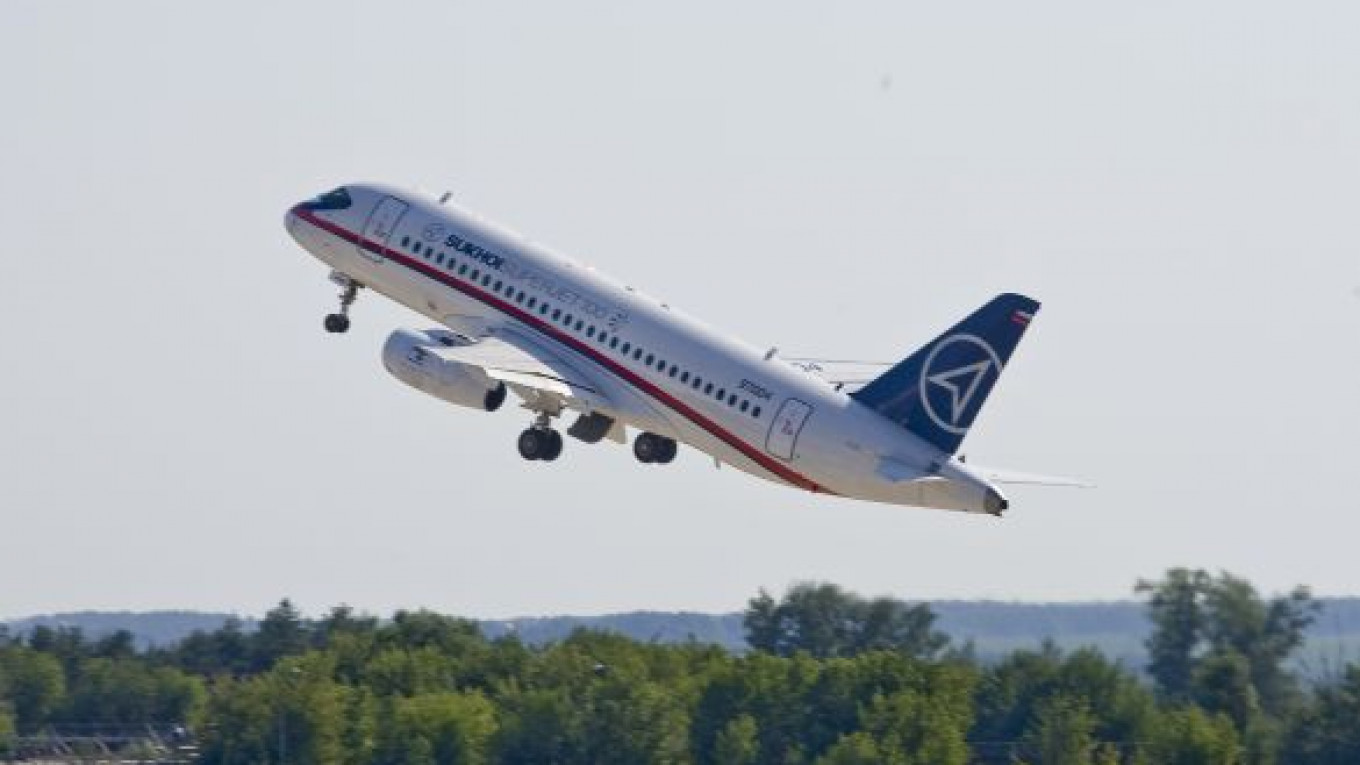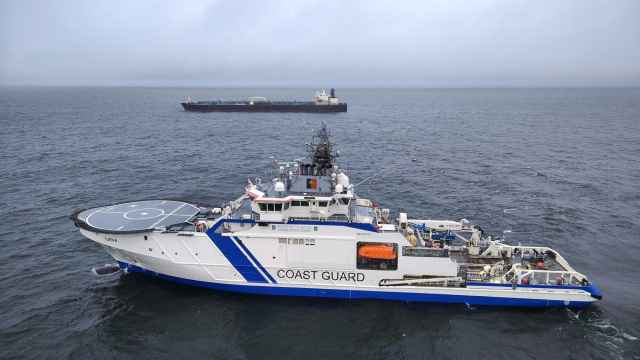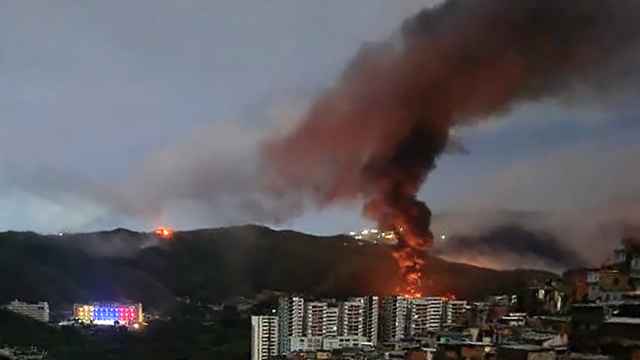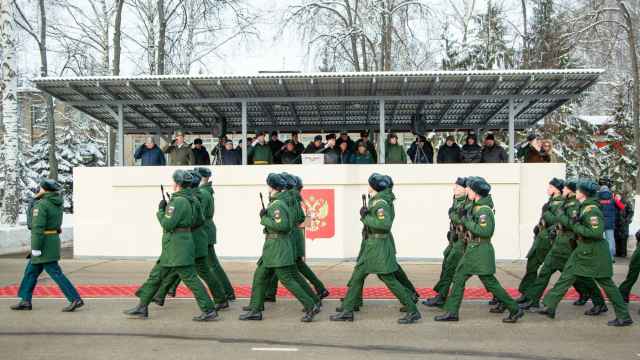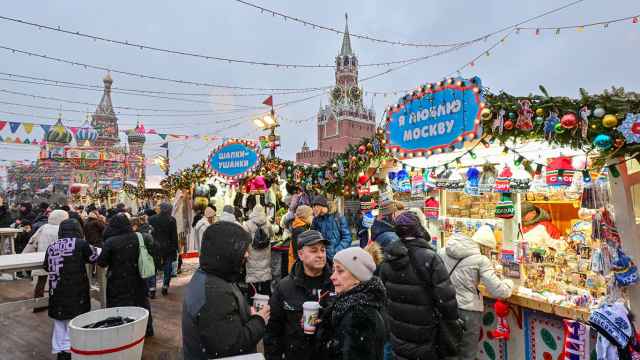ABOARD THE SUPERJET — "Ladies and gentlemen please fasten your seat belts, make sure that your seats are in the full upright position and pay attention as our cabin crew demonstrate the safety features on this Superjet SSJ-100," said the captain's voice.
Two dozen journalist-passengers, bleary eyed after rising early to make the two-hour journey to the airfield and another two hours spent in departure lounges, standing on hot tarmac and being ferried by buses, obediently took their seats and buckled up.
The engines fired up, the cabin was filled with a whining like a distressed refrigerator, and the 100-seater plane hurtled down the runway and lunged into the air, very quickly for a passenger accustomed to larger, more lumbering jet aircraft.
It was a mundane procedure and could have been an ordinary scene on any morning flight between European capitals. And that was the point.
The Superjet 100 is the first new airliner Russia has built since the fall of the Soviet Union, and the flight from the Zhukovsky airfield over the Moscow region was an attempt to prove that the phoenix rising from the ashes of the post-Soviet aviation industry is as quiet, calm and comfortable as any regional aircraft that competitors like Canada's Bombadier and Brazil's Embraer can produce.
The SSJ is meant to resurrect the domestic aviation industry. Manufacturer Sukhoi and Superjet International, the Russian-Italian joint venture that sells the planes internationally, has set a target of selling 1,000 planes over the next decade.
It's a rare enough event to be a passenger on a Superjet. There are only two in service in the world: one with Armenia's Armavia and one with Aeroflot. The machine in use at the MAKS air show was delivered to the Yerevan-based carrier in April — the very first of the craft to enter service.
Sukhoi Civil Aviation president Vladimir Prisyazhnyuk told journalists at the show Thursday that the company plans to deliver four more Superjet 100s to Aeroflot by the end of this year.
Production at the Komsomulsk-on-Amur factory is currently running at one plane per month, he said, but should rise to three per month by 2012.
United Engine Corporation plans to invest 3 billion rubles ($103 million) expanding capacity to produce the SaM-146 engine for the jet, Oboronprom chief Andrei Reus told reporters Wednesday.
Prisyazhnyuk said the company would increase its order portfolio by 57 airliners over the course of this week's air show, not including a contract with UTair Airlines for 24 aircraft that was signed earlier.
The president of Superjet International said he hoped that European certification later this year would open up "more cautious markets" in Europe and the United States.
Following a chance to wolf down coffee and sandwiches provided by United Aircraft Corporation in a conference hall-turned-temporary departure lounge, the trek across the hot tarmac to the bus began.
After a ride around the airfield's Soviet-era hangers, the passengers who boarded the beige-liveried aircraft Wednesday morning subconsciously slipped into the stereotypical rhythm of regional flights in the former Soviet Union — psychologically resigned to the prospect of a shaky flight punctuated by strange smells and a meal of smoked fish, pickles and indeterminate processed-meat products.
But the neat cabin with its full economy-class layout, five seats to a row — three to starboard and two to port — seemed more like an aircraft that European budget airlines frequently use to whisk British stag parties and the occasional price-conscious businessman to Prague.
The effect was only spoiled by uneven gaps between wall and ceiling panels that looked as if someone had pried open the oxygen mask compartment to conceal a stash of heroin, but had failed to reassemble it afterward.
The lack of individual overhead ventilation vents was only slightly irritating. The toilet at the rear of the cabin contains the cramped but clean fixtures familiar to any air traveler. The armrests worked, the tray table operated smoothly, and the seats reclined comfortably.
"It's a delight to fly. A new generation plane no different than its Airbus analogy," the Armenian pilot told reporters after the flight.
A Message from The Moscow Times:
Dear readers,
We are facing unprecedented challenges. Russia's Prosecutor General's Office has designated The Moscow Times as an "undesirable" organization, criminalizing our work and putting our staff at risk of prosecution. This follows our earlier unjust labeling as a "foreign agent."
These actions are direct attempts to silence independent journalism in Russia. The authorities claim our work "discredits the decisions of the Russian leadership." We see things differently: we strive to provide accurate, unbiased reporting on Russia.
We, the journalists of The Moscow Times, refuse to be silenced. But to continue our work, we need your help.
Your support, no matter how small, makes a world of difference. If you can, please support us monthly starting from just $2. It's quick to set up, and every contribution makes a significant impact.
By supporting The Moscow Times, you're defending open, independent journalism in the face of repression. Thank you for standing with us.
Remind me later.


